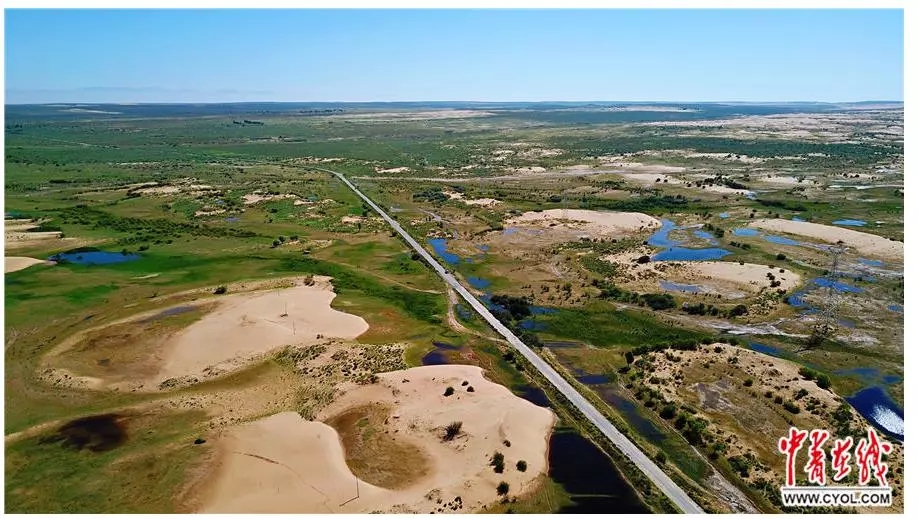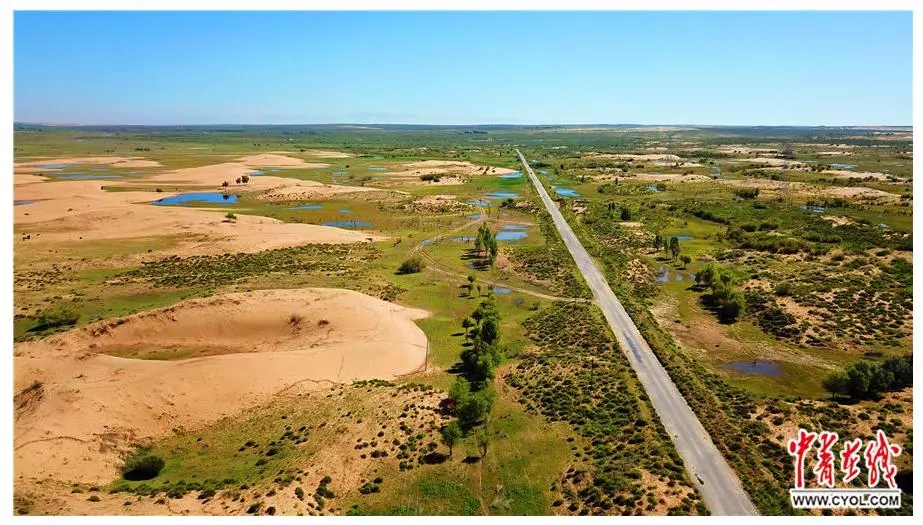Sand control along cross-desert highway
Updated: 2018-08-08  Print
Print 




An aerial view of the highway crossing the desert in Hanggin Banner, Ordos, Inner Mongolia autonomous region [Photo/cyol.com]
The Xini-Wulashan Highway in Hanggin Banner, Ordos, Inner Mongolia autonomous region, called by local residents the “cross-dessert highway”, has been applauded by various media organizations as bird-view photos showing the greening efforts along the route recently went viral on the Internet.
The 115-kilometer highway starts from Xini town in Hanggin Banner and runs to Wulashan town in Bayan Nur city. Built 20 years ago, it crosses the Kubuqi Desert, China’s seventh largest, as well as the Yellow River, and has now become a symbolic landmark showcasing local residents’ ambition to shake off the shackles of poverty and their efforts to fight desertification.
Before the route was built, the Kubuqi Desert occupied roughly 40 percent of the 18,900-square-kilometer Hanggin Banner and hindered north-south connections in the area.
In the harsh environment resulting from the raging sand, more than 50,000 local residents lived on low incomes, unable to trade products with outside areas. What’s even worse was that cases of deaths in the past were due to the terrible transportation.
In such circumstances, a unanimous decision was made by the local government and residents to build a route linking south and north. On June 16, 1997, the ambitious project began.
Meanwhile, greening of the surrounding areas along the road was also initiated as local people realized that protecting the road from sand erosion was as important as building it.
More than 3 million yuan ($439,432) was raised in three years to support the construction of the highway.
It took those three years to complete the project. A total of six major sand control campaigns were initiated with each one lasting at least half a month and involving more than 10,000 people.
The workforce engaged in the sand control project consisted of farmers along the route and staff from 113 institutions and organizations in the area. They were stationed in the desert, setting sand-protecting barriers and planting drought-resistant trees such as salix mongolica with the aim of controlling the sand near the road.
The completion of the construction brought tangible economic, social and ecological benefits to Hanggin Banner and surrounding areas. It lowered transportation costs and helped lift more people along the highway out of poverty at a faster rate.
Additionally, a large area of desert was brought under control due to local greening efforts. As of now, 80,700 hectares of desert along the highway are dotted with trees.

The highway was built over three years and is protected against sand by trees. [Photo/cyol.com]





 Ordos Impression
Ordos Impression Ordos WeChat
Ordos WeChat Ordos Reported
Ordos Reported


